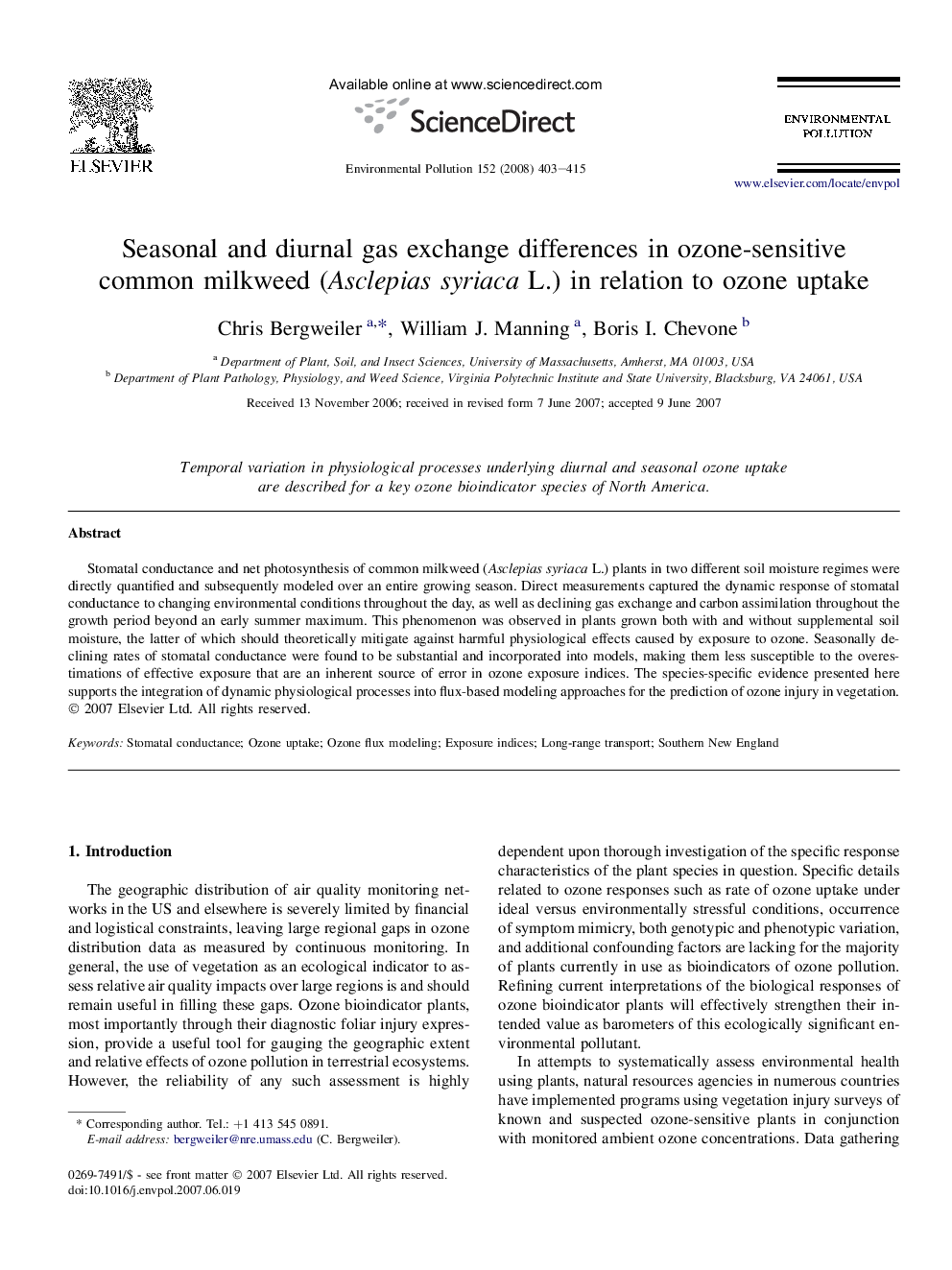| Article ID | Journal | Published Year | Pages | File Type |
|---|---|---|---|---|
| 4427208 | Environmental Pollution | 2008 | 13 Pages |
Abstract
Stomatal conductance and net photosynthesis of common milkweed (Asclepias syriaca L.) plants in two different soil moisture regimes were directly quantified and subsequently modeled over an entire growing season. Direct measurements captured the dynamic response of stomatal conductance to changing environmental conditions throughout the day, as well as declining gas exchange and carbon assimilation throughout the growth period beyond an early summer maximum. This phenomenon was observed in plants grown both with and without supplemental soil moisture, the latter of which should theoretically mitigate against harmful physiological effects caused by exposure to ozone. Seasonally declining rates of stomatal conductance were found to be substantial and incorporated into models, making them less susceptible to the overestimations of effective exposure that are an inherent source of error in ozone exposure indices. The species-specific evidence presented here supports the integration of dynamic physiological processes into flux-based modeling approaches for the prediction of ozone injury in vegetation.
Related Topics
Life Sciences
Environmental Science
Environmental Chemistry
Authors
Chris Bergweiler, William J. Manning, Boris I. Chevone,
